Today’s networking, data center and communication systems require multiple clock and frequencies with stringent jitter and accuracy requirements. We offer multi-output, feature-rich clock generators with optional integrated clock sources for low-power and low-jitter applications. Quickly solve your timing challenges and solve complex clock trees with our highly configurable and easy-to-use family of clock generators.

Clock Generation
Solve your timing challenges using our broad lineup of configurable, feature-rich and high-performance clock generators.

PCIe® Timing
Our highly integrated PCIe Gen 1 to 6 clock generators meet and exceed PCIe jitter requirements to simplify board and system designs, improve design margins and lower risk.

Automotive
We offer the industry’s broadest automotive clock generation portfolio that leverages our cutting-edge MEMS technology to give superior reliability and robustness for Advanced Driver-Assistance Systems (ADAS), powertrain and autonomous driving applications.
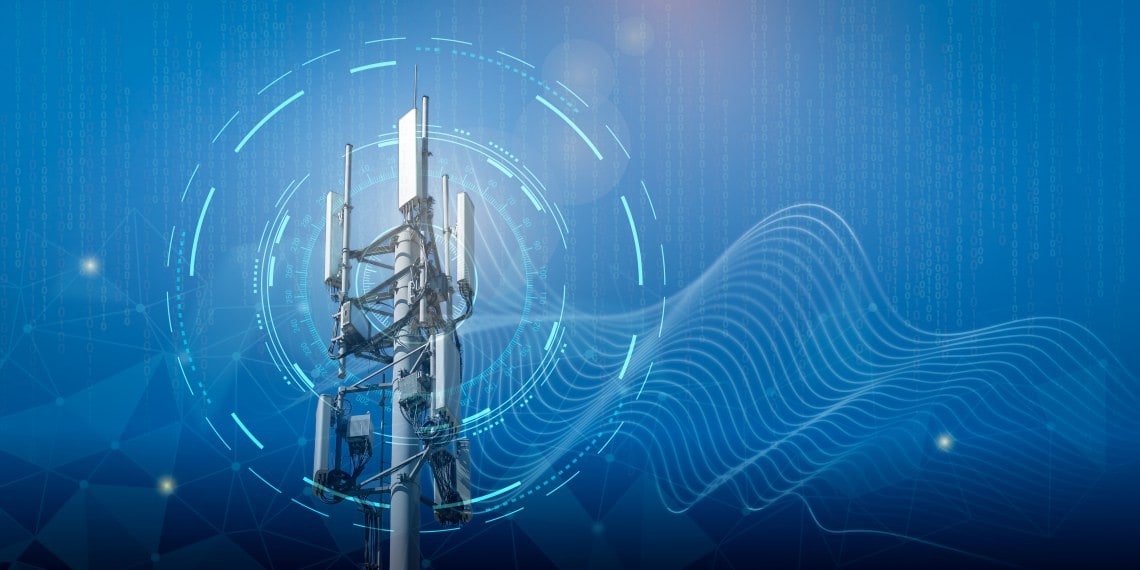
5G
Our feature-rich and ultra-low jitter clock generators will help you confidently exceed requirements for your leading-edge 5G designs.
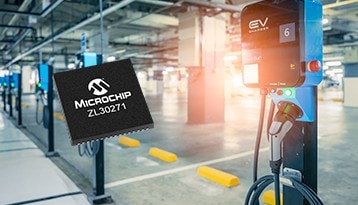
ZL30271
Ultra-low phase jitter, five synthesizers, 10 outputs in a 9 × 9 mm package
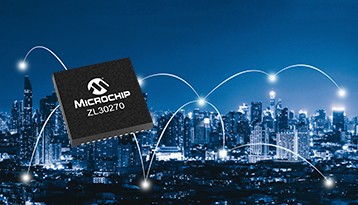
ZL30270
Ultra-low phase jitter, five synthesizers, six outputs in a 7 × 7 mm package
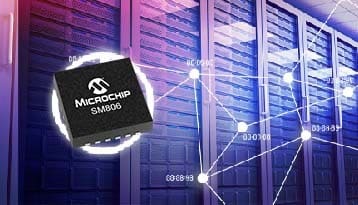
SM806
Ultra-low phase jitter (78 fs, 12 kHz to 20 MHz) with six outputs
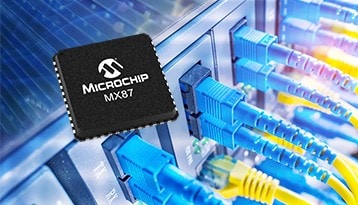
MX87
Entire clock tree in a single device with integrated crystal
Customize Your Clock Generators with ClockWorks® Configurator
With just a few clicks, you can program your devices to any combination of frequency, temperature, ppm and package size to meet your specific application’s requirements. You can also use this tool to download customized data sheets and order custom samples with a 48-hour turnaround.
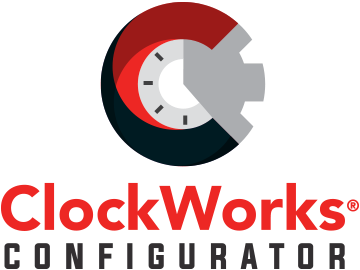
Need Some Help?
We are here to support you. Contact our Client Success Team to get assistance with your design.

PCIe Overview
This 5-minute video provides the viewer with the fundamental concepts related to PCIe; it is the first video in a series that focuses primarily on the clocks and timing issues related to PCIe, and it also provides a basic understanding with which to explore further PCIe topics.
Intended Audience:
Anyone interested in an easy-to-understand high-level introduction to PCIe. No prior knowledge of PCIe is assumed.
What topics are covered?
1. Point-to-Point bus
2. Bi-directional bus
3. Scalability of data rates
4. Backwards compatibility
5. Wide adoption across many markets
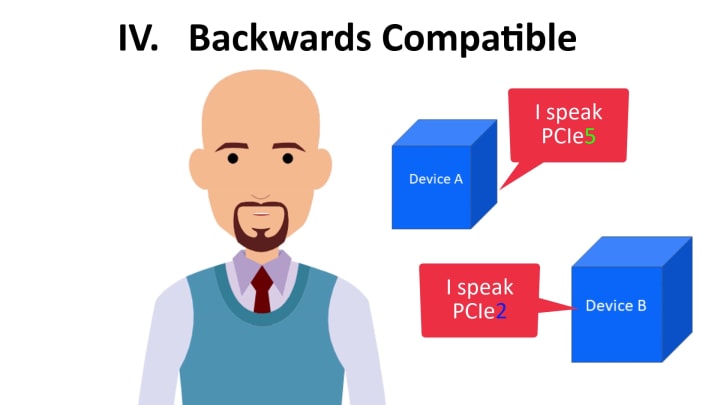
PCIe QuickLearn Video Series | Video #1 - PCIe Overview
Video #1 - PCIe Overview
This 5-minute video provides the viewer with the fundamental concepts
related to PCIe; it is the first video in a series that focuses
primarily on the clocks and timing issues related to PCIe, and it also
provides a basic understanding with which to explore further PCIe
topics.
Intended Audience:
Anyone interested in an easy-to-understand high-level introduction to PCIe. No prior knowledge of PCIe is assumed.
What topics are covered?
1. Point-to-Point bus
2. Bi-directional bus
3. Scalability of data rates
4. Backwards compatibility
5. Wide adoption across many markets

Cut Board Space by up to 80% on Timing Components
Cut Board Space by up to 80% on Timing Components
[MNV356] Industry’s smallest multi-output MEMS clock generator offers up to 80 percent board space savings on timing components.
| https://www.microchip.com/en-us/product/DSC613 |

Microchip's MEMS Clock Generators Webinar
Microchip's MEMS Clock Generators Webinar
Can programmable MEMS-based clock generators make a significant difference in your Internet of Things or other connected design? Watch this video to learn how they offer accurate timing while simplifying your design and reducing the overall system bill-of-materials.

ClockWorks® Configurator Online Tool
ClockWorks® Configurator Online Tool
This video walks you through the features of ClockWorks® Configurator Online Tool and shows you how to customize oscillators and clock generators. With this easy-to-use tool, users can receive dynamic data sheets and samples within a few days.
| https://clockworks.microchip.com/microchip/ |

Single AAAA Battery Reference Design for Low Power PIC® MCUs
Single AAAA Battery Reference Design for Low Power PIC® MCUs
Powering low power microcontrollers with a single battery using voltage boost converters. As more electronic applications require low power or battery power, energy conservation becomes paramount. Today's applications must consume little power, and in extreme cases, last for up to 15-20 years, while running from a single battery. To enable applications like these, products with Microchip's nanoWatt XLP Technology offer the industry's lowest currents for Run and Sleep, where extreme low power applications spend 90%-99% of their time. Benefits of nanoWatt XLP Technology: ■ Sleep currents below 20 nA ■ Brown-out Reset down to 45 nA ■ Watch-dog Timer down to 220 nA ■ Real-time Clock/Calendar down to 470 nA ■ Run currents down to 50 μA/MHz ■ Full analog and self-write capability down to 1.8V

Low Power MCU Comparision: nanoWatt XLP Vs. MSP430
Low Power MCU Comparision: nanoWatt XLP Vs. MSP430
Three of nanoWatt XLP Technologys key advantages are: Sleep currents down to 20 nA, Real-Time Clock currents down to 500 nA, and Watchdog Timer currents down to 400 nA. The vast majority of low-power applications require one or more of these features. nanoWatt XLP Technology combines all three in a comprehensive portfolio of devices. Whether it is extended battery life, sealed batteries, or the integration of energy harvesting, Microchips 8- and 16-bit PIC MCUs with nanoWatt XLP Technology provide more freedom for designers that need their products to operate longer using less power, or requiring fewer battery changes.

More Low Power MCU Comparisons: nanoWatt XLP Vs. MSP430
More Low Power MCU Comparisons: nanoWatt XLP Vs. MSP430
Three of nanoWatt XLP Technologys key advantages are: Sleep currents down to 20 nA, Real-Time Clock currents down to 500 nA, and Watchdog Timer currents down to 400 nA. The vast majority of low-power applications require one or more of these features. nanoWatt XLP Technology combines all three in a comprehensive portfolio of devices. Whether it is extended battery life, sealed batteries, or the integration of energy harvesting, Microchips 8- and 16-bit PIC MCUs with nanoWatt XLP Technology provide more freedom for designers that need their products to operate longer using less power, or requiring fewer battery changes.

The World's Lowest Power in Sleep MCU: nanoWatt XLP from Microchip
The World's Lowest Power in Sleep MCU: nanoWatt XLP from Microchip
Three of nanoWatt XLP Technologys key advantages are: Sleep currents down to 20 nA, Real-Time Clock currents down to 500 nA, and Watchdog Timer currents down to 400 nA. The vast majority of low-power applications require one or more of these features. nanoWatt XLP Technology combines all three in a comprehensive portfolio of devices. Whether it is extended battery life, sealed batteries, or the integration of energy harvesting, Microchips 8- and 16-bit PIC MCUs with nanoWatt XLP Technology provide more freedom for designers that need their products to operate longer using less power, or requiring fewer battery changes.

TimeFlash MEMS Oscillators Field Programming Kit
TimeFlash MEMS Oscillators Field Programming Kit
A quick demonstration of the TimeFlash MEMS Oscillators Field Programming Kit that allows users to instantly program MEMS oscillators to any frequency, anywhere. This kit supports all Microchip MEMS oscillator package sizes and is designed to enable rapid prototyping and testing.
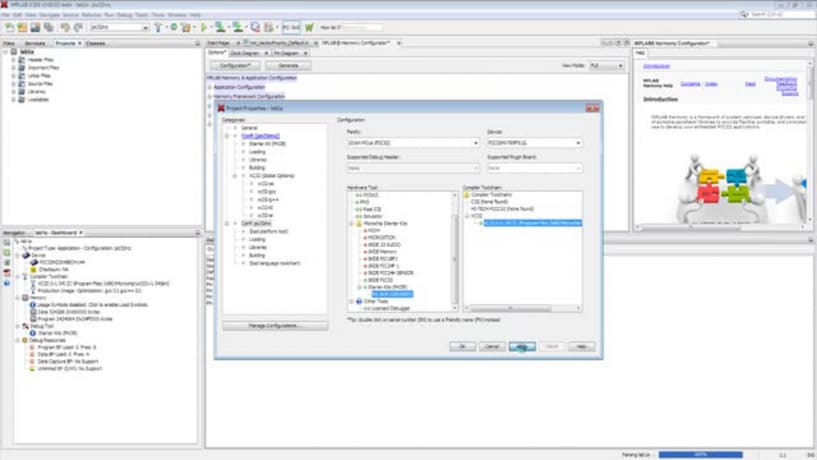
Application Migration Using MPLAB® Harmony
Application Migration using MPLAB® Harmony
Embedded developers today are challenged not only with developing an application with time and resource constraints but also with the need to have the application work across multiple display platforms each using different graphical displays, controllers and microcontrollers. This video demonstrates how MPLAB® Harmony can enable application migration in 3 easy steps. 1) Create new configurations with the same project. 2) Choose the board support package for the new graphical display and clock settings for the new microcontroller. 3) Configure the drivers and application libraries for the application. Generate, build and compile.. The Award Winning MPLAB® Harmony framework with its configurator can enable application migration across boards with different microcontrollers, displays and graphics controller options without a single line of code being written saving the developer time and resource.
| https://www.microchip.com/en-us/tools-resources/configure/mplab-harmony |